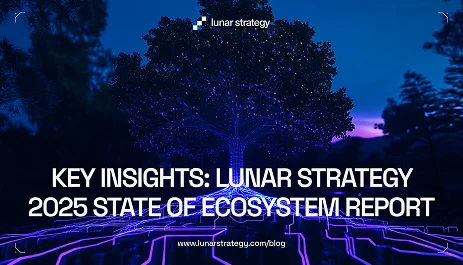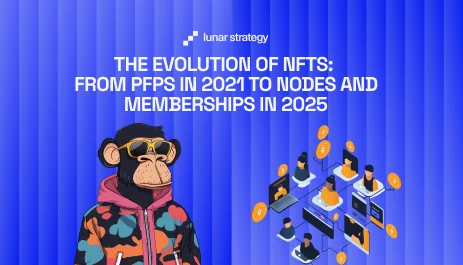The integration of AI within crypto projects is no longer a futuristic concept – it's a reality that's unfolding before our eyes in 2024. These are two of the fastest-growing sectors in tech today, and when these two intersect, things get interesting, to say the least.
Today, let’s explore how some projects disrupt traditional digital business infrastructures with the AI models and ecosystems they’ve been building. Each project brings a unique approach to tackling real-world challenges, from democratizing access to AI and data to revolutionizing e-commerce and natural language understanding.
1) YOUR AI
YOUR AI Protocol is a multi-chain e-commerce solution that’s disrupting the $8.8 trillion e-commerce industry by using their one-of-a-kind AI protocol. Built on the solid foundations of Bitcoin, Ethereum, and Solana, YOUR AI addresses the market's demand for fair monetization, control, and transparency of product content by delivering clear, precise, and AI-optimized information about products. With YOUR AI, what customer see is exactly what they get.
At the heart of YOUR AI Protocol is its unique AI model, AI Picasso, which fine-tunes product content to align with individual shoppers' preferences, enhancing the consumer shopping journey and increasing e-commerce conversion rates. Through strategic partnerships with industry giants like Shopify, YOUR AI has gained access to a vast user base of over 700 million users across 4.6 million shops. The protocol's SDK application enables seamless integration of AI-powered content across all e-commerce platforms. Moreover, the Creator application provides a single platform for content generation, supporting ownership and rewards for creators.
The $YOURAI token, which recently made history with its record-breaking IDO on DAO Maker, serves as the backbone of the YOUR AI ecosystem. It enables access to content features through staking, rewards contributors for their efforts in growing and maintaining the protocol. $YOURAI holders also gain voting rights in the YOUR DAO governance, ensuring a decentralized and community-driven future for the protocol. With a strong network of strategic partnerships, including alliances with prominent web3 investment entities and key opinion leaders, YOUR AI Protocol is well-positioned to disrupt the traditional norms of e-commerce.
2) Fetch AI
Fetch.ai is an intriguing project that's tackling the challenge of making AI more accessible and useful in the real world. They're building a decentralized platform where AI agents can interact, learn, and provide services to users and businesses. It's kind of like a marketplace for AI, where these autonomous agents can search for data, negotiate deals, and share insights.
What's cool is that Fetch.ai is targeting some pretty impactful use cases. For example, they want to optimize financial trading, improve public transportation, and make smart cities adapt better to people's needs. They're even looking at ways to cut out the middlemen in the gig economy and connect energy grids more efficiently. Under the hood, Fetch.ai runs on a distributed ledger, which helps keep everything secure and transparent. And by making their network permissionless, they're trying to break the data monopolies we see today and put the power back in the hands of individuals.
3) Nuklai
Nuklai is an ambitious project that changes the way we handle and monetize data. In a nutshell, they're building a decentralized platform where businesses and individuals can share, access, and analyze data in a more open and collaborative way. One of the key issues Nuklai is tackling is the fragmentation of the data landscape. Right now, data is often collected within organizations, and it can be a real hassle to access and combine data from different sources. This creates a high barrier to entry for companies looking to leverage their data for new business models or AI applications.
Nuklai's solution is to create a unified data sharing ecosystem. They've built a platform that allows users to easily upload and structure datasets from various sources into a standardized format. This means that when you're working with multiple datasets, you'll have a consistent interface to work with, making analysis and collaboration much smoother. They're also focused on incentivizing data sharing through a tokenized ecosystem. Data providers can earn rewards for contributing valuable datasets, while data consumers pay for access. This creates a fair and transparent market for data, where everyone can benefit.
One exciting aspect of Nuklai is its potential to power the next generation of large language models (LLMs) and AI. By integrating structured data into LLM training, Nuklai could enable more accurate and specialized AI applications in fields like healthcare, finance, and law. They're also aiming to democratize access to AI by offering easy-to-use APIs and distributed computing power. As Nuklai grows, it could play a key role in the emerging "Economy of Things" by providing the data infrastructure for tokenized real-world assets.
4) Nosana
Nosana is a fascinating project that's aiming to revolutionize the way we handle AI workloads and computing resources. At its core, Nosana is building a decentralized network that allows users to access GPU computing power for running AI models like LLama 2 and Stable Diffusion at scale. It's kind of like Airbnb for AI computing, where folks with excess GPU capacity can rent it out to those who need it.
But before we dive into the nitty-gritty, let's take a step back and talk about what Nosana was originally designed for: CI/CD pipelines. CI/CD stands for Continuous Integration and Continuous Deployment. It's a software development practice that helps teams rapidly and reliably push out new features and fixes. Essentially, it automates a lot of the testing and deployment process, making it easier to ship code with fewer bugs. Nosana initially set out to decentralize this CI/CD process, making it more accessible and less reliant on big tech companies. But in late 2023, they pivoted to focus on AI workloads instead. I think this was a smart move, given the explosive growth and demand in the AI space.
So, how does Nosana work in practice? Well, right now, the network is in its Incentivized Test Grid phase. This is kind of like a beta test, where folks can try out the platform and help identify any kinks before the big mainnet launch. Once that launches (around August 2024, according to their roadmap), Nosana will serve as a marketplace connecting AI users with GPU providers.
Looking ahead, Nosana has some ambitious plans. They're looking to release SDKs and connectors for popular AI frameworks like PyTorch and TensorFlow, which could make it even easier for developers to tap into the network. They're also planning to add support for businesses and fiat currency down the line, making this project a unique and exciting opportunity for potential early investors.
5) Golem AI
Golem.ai is a project that's taking a fresh approach to natural language understanding (NLU) in the AI space. While most NLU technologies today rely on either statistical methods (like training neural networks on massive datasets) or classical grammatical approaches, Golem.ai is taking a different path: linguistic universals.
The idea behind linguistic universals is that there are certain structures and patterns that are inherent to all human languages. This concept was popularized by Noam Chomsky, the renowned linguist and cognitive scientist. Chomsky argued that a significant portion of language is innate rather than acquired, reflecting the underlying cognitive structures of the human mind.
Golem.ai is using this idea to build an NLU technology that doesn't require extensive training on specific languages. Instead, the AI is designed with a built-in understanding of the universal principles of human language. This allows Golem.ai to be easily adapted to multiple languages without the need for massive datasets or lengthy training processes. Essentially, Golem.ai is configured by describing the expected elements (like the purposes of actions or interpretations in a given context) and providing the specific vocabulary for the business domain. This approach is much more efficient than training a model from scratch for each new use case.
One of the key advantages of Golem.ai's approach is that it frees up developers and businesses to focus on the user experience and continuous improvement of their NLU applications. With traditional approaches, a lot of time and resources are spent on configuring and training the underlying NLU model. By abstracting away this complexity, Golem.ai allows teams to invest more in the aspects that truly differentiate their products.
Imagine being able to launch a chatbot in multiple languages with minimal configuration, or being able to quickly adapt an NLU model to a new domain without extensive retraining. These are the kinds of possibilities that Golem.ai is opening up.
As with any new technology, there will undoubtedly be challenges and limitations to overcome. But we’re excited to see how Golem.ai evolves and what kinds of applications it enables. By bringing together insights from linguistics, cognitive science, and AI, Golem.ai is charting a new path in the field of natural language understanding.





































